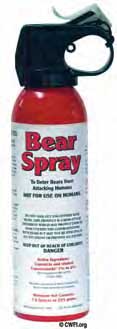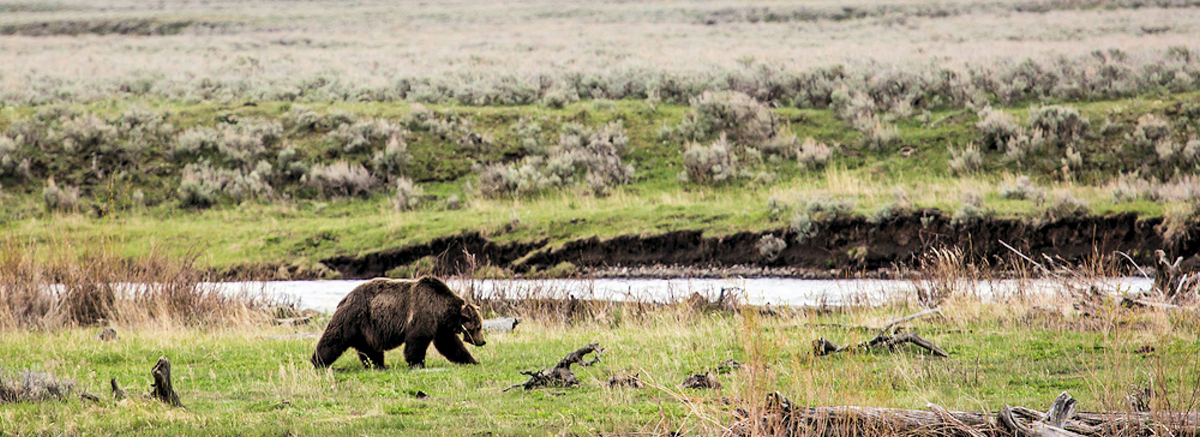Safe travels in bear country begin before you get on the trail. Learning about bears before you come to the park can help you avoid a confrontation. Read about bear spray and what to do if you encounter a bear. When you arrive at the park, check at the nearest backcountry office or visitor center. Below is information to help visitors travel safely in bear country.

Bear spray is proven to be highly successful at stopping aggressive behavior in bears.
Be prepared for bear country
Wildlife scientists note that there is an average of one bear attack in the park each year. In 2011, in separate incidents, two visitors were mauled and killed by bears inside the park.
Hiking in bear country takes appropriate preparation. Before you set out, be sure to learn and think through fully what you need to do if you ever encounter a bear unexpectedly. While some insights and advice are offered here, deeper and more detailed resources are available at visitor centers-where public bear spray demonstrations will be offered in summer ranger programs-and on the park website.
Statistically, you’re most likely to have an encounter with bears at park roadsides. If you see a bear while driving, do not stop. Regardless of what other people may do, keep moving to the next paved pullout and park safely. If the bear is within 100 yards, watch and take photographs from inside your car. Do not surround or disrupt any animal’s path. If other visitors put you or wildlife in danger, leave the scene and notify a park ranger. Always comply with the instructions of park staff on scene.

As you venture beyond developed areas, stay clear of animal carcasses. As you hike, watch for gatherings of ravens, magpies, and coyotes. They can be good first indicators that an animal carcass is nearby. Bears are very protective of carcasses as a food source. A single dead animal can attract and hold a dozen bears or more. If you find a carcass with significant portions of meat remaining, bears still may be bedded down nearby. Leave the area immediately by the same route you used to get there. When detouring around a carcass, choose a route with good visibility and where the wind is at your back so that your scent is pushed out ahead of your direction of travel. This can warn unseen bears of your presence. If it is unsafe to detour around a carcass, turn back and find another trail to explore.
One of the most dangerous situations you can face in nature is a sow protecting her cubs. As cute and charismatic as cubs can be, no photograph of them is ever worth risking personal injury. Always assume mother is nearby and ready to protect her young. For the safety of others, please report all bear incidents and wildlife encounters to a park ranger immediately.
